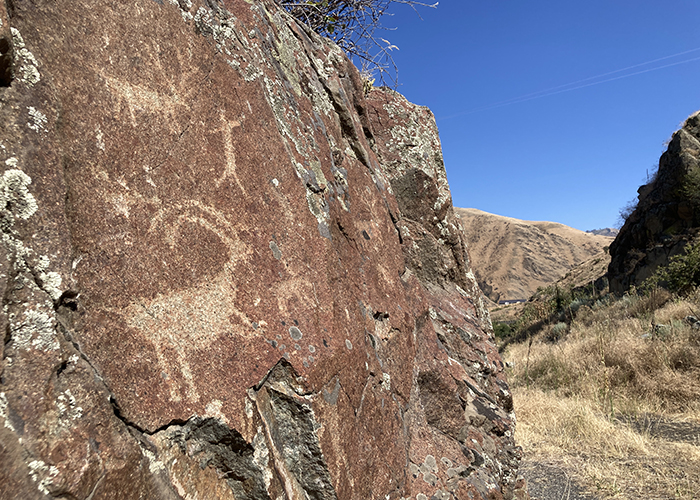 More 2022 Adventures |
Boise, ID → Asotin, WA → New Meadows, ID 325.0 mi (523.0 km) |
 Next Day |
Ta’c méeywi!
Today I’m out and about in the northern reaches of the Gem State, exploring Nez Perce National Historical Park! It’s a super unusual national park unit, 38 unique sites scattered across Montana, Idaho, Washington, and Oregon! This park preserves important places in the history of the Niimíipuu, known since the 1700s by their French epithet, Nez Percé, which meant “pierced nose” even though nose piercing was a Chinook custom!
Most historical sites related to Native American tribes are interwoven with battles, and the story of the Niimíipuu shares that bloodshed. My first stop on my circuit was the site of the White Bird Battlefield, where war first broke out on June 17, 1877. The US Army was here to persuade the tribe to move onto a reservation, and though both sides claimed they meant to be peaceful, shots rang out anyway! With the killing of 34 US soldiers, the four-month Nez Perce War broke out, which would chase the tribe east over the Lolo Pass to surrender in Montana on October 5, 1877.
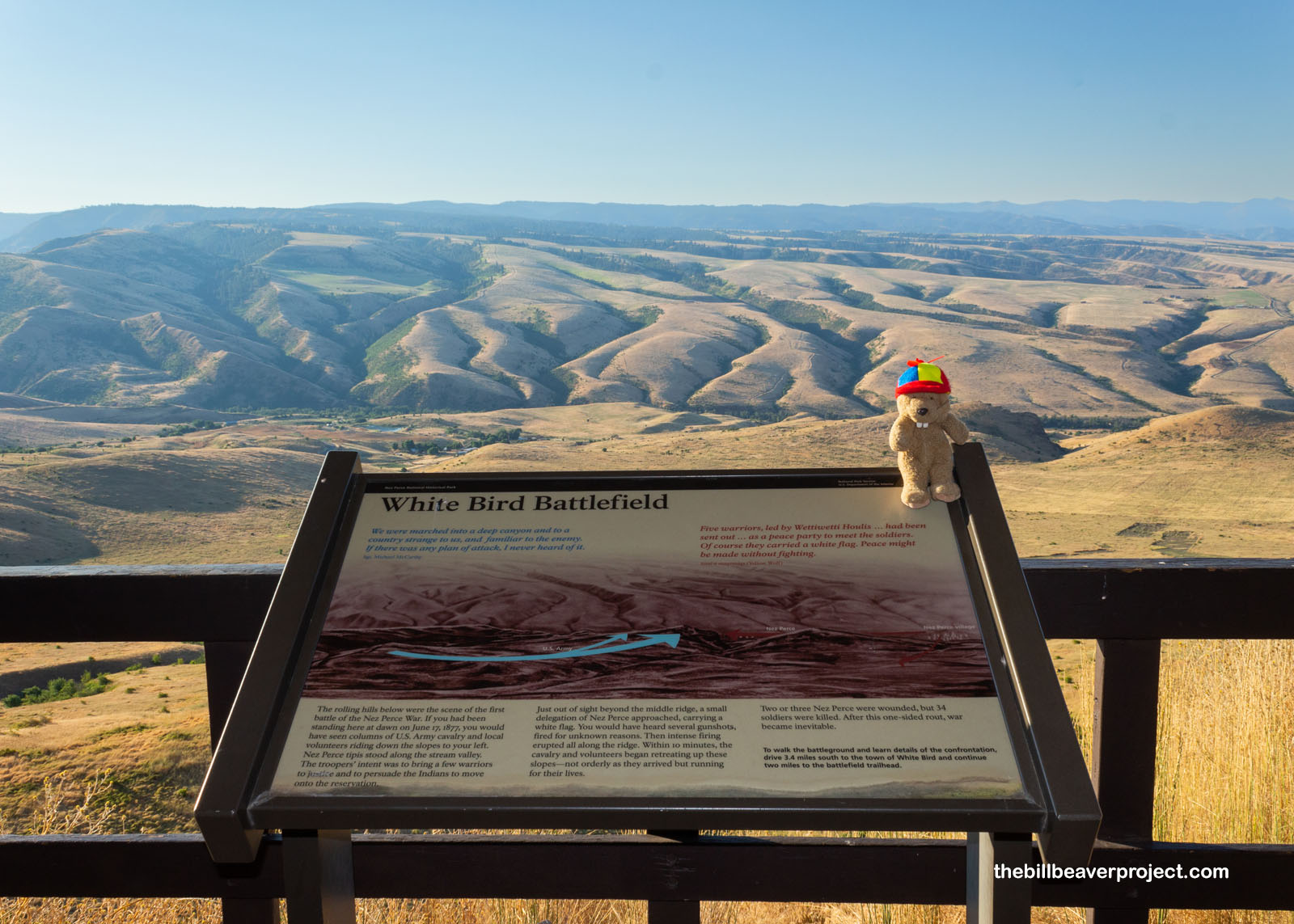 |
But unlike many historical sites related to Native tribes, this one is still home to the original places at the (pardon the pun) heart of Niimíipuu culture and identity. One of the most important of these is Tim’né-pe, the Heart of the Monster, where the Niimíipuu trace their origins!
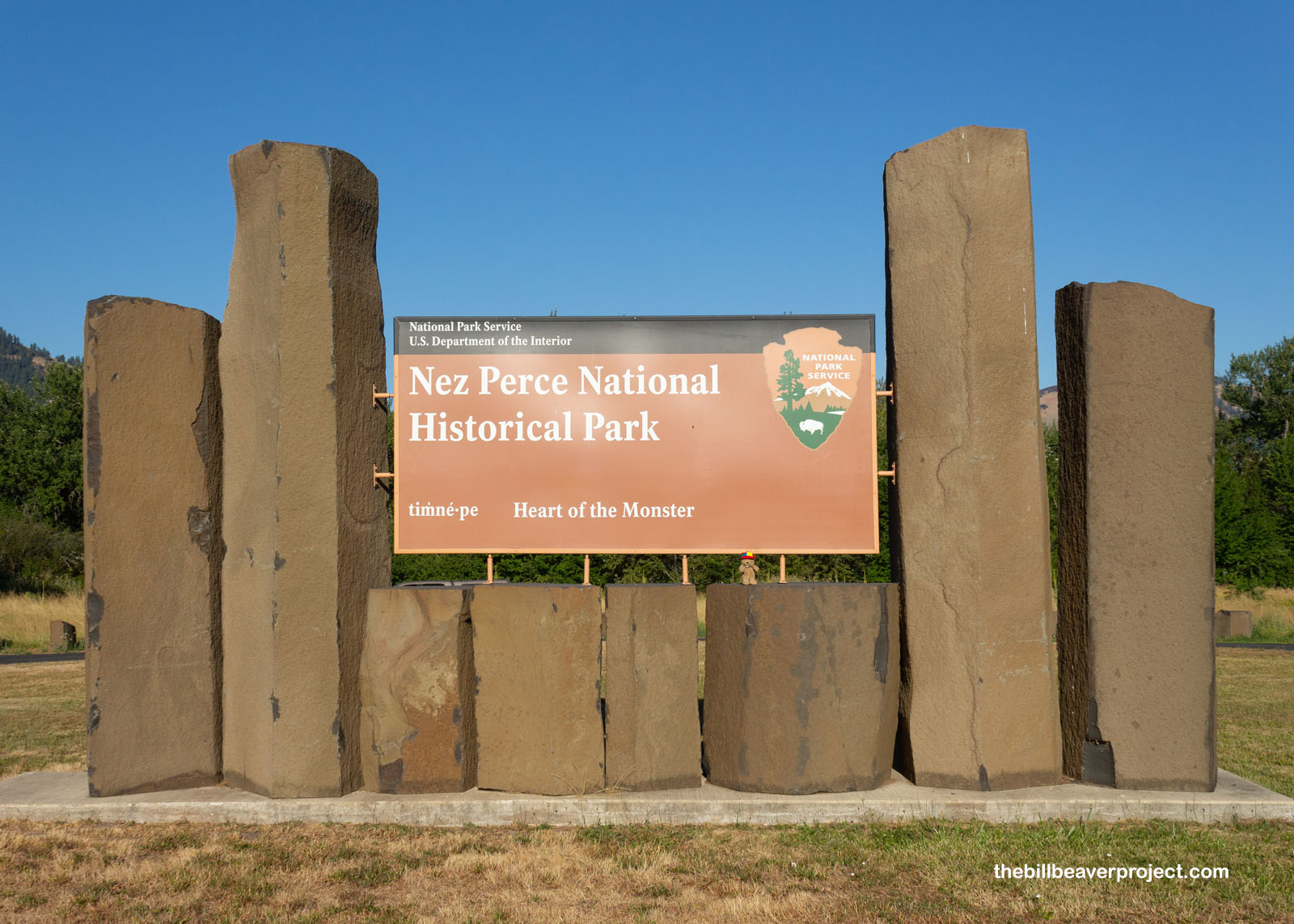 |
The hill in the background is all that remains of a colossal monster that ate up all the animals, leaving Coyote (Iceye’ye) all by himself. Iceye’ye is about as revered a character as can be in Niimíipuu lore, a creator, a trickster, and a strict disciplinarian with a real taste for petrification! In short, he was the wrong critter for a monster to mess with!
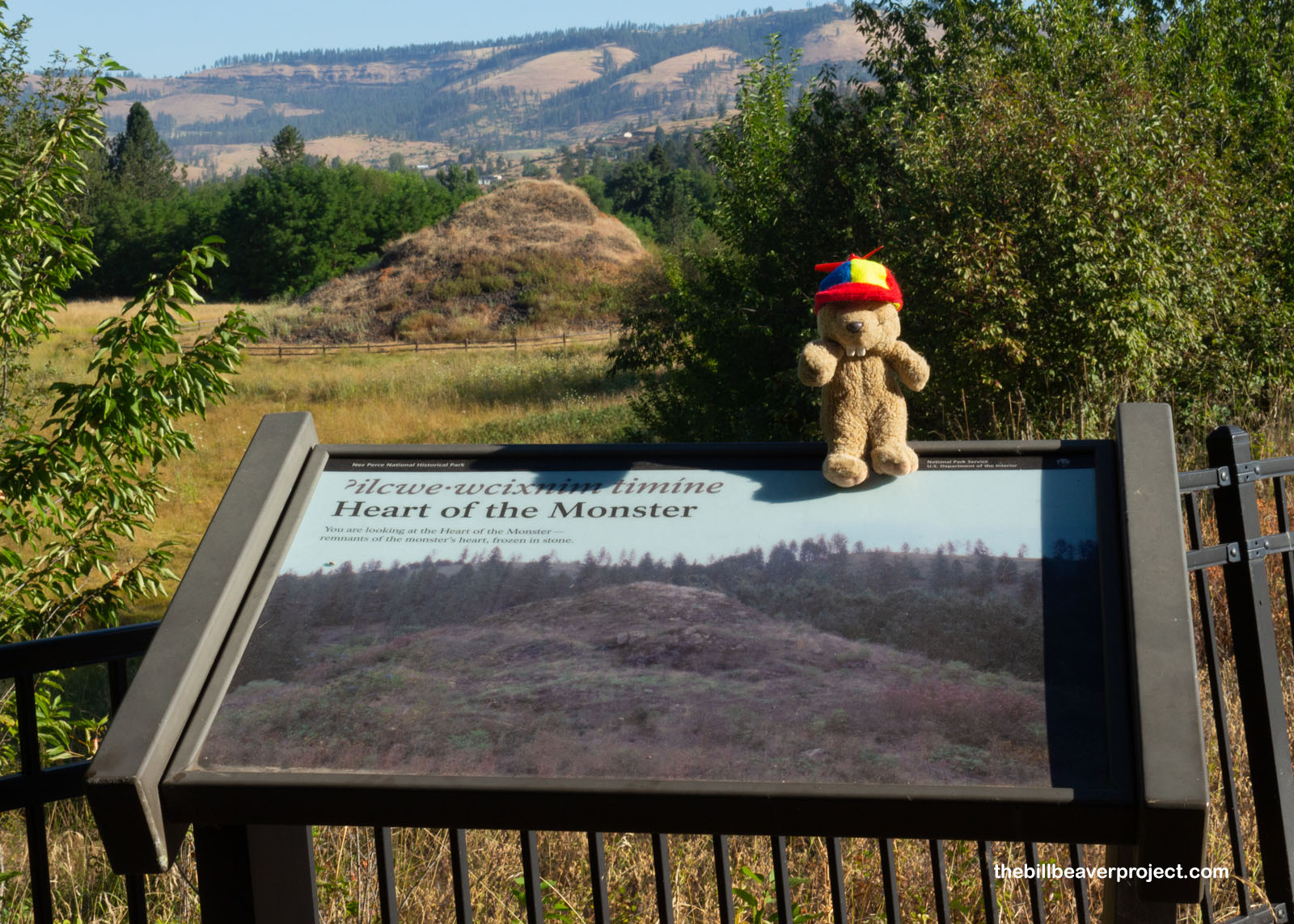 |
Near the base of the hill, there was a speaker, which told the story in English and Nimipuutímt, how Coyote let himself be swallowed by the monster, and how he unleashed havoc once inside, starting a fire and cutting away its heart. He accidentally kicked Grizzly Bear in the face, giving him a flat nose, and stepped on Rattlesnake, giving him a flat head! But after all was said and done, the monster fell dead, and its heart turned to stone! Coyote scattered pieces of its body across the world, creating people from the remains, concluding his work with the creation of the Niimíipuu at the petrified heart of the monster!
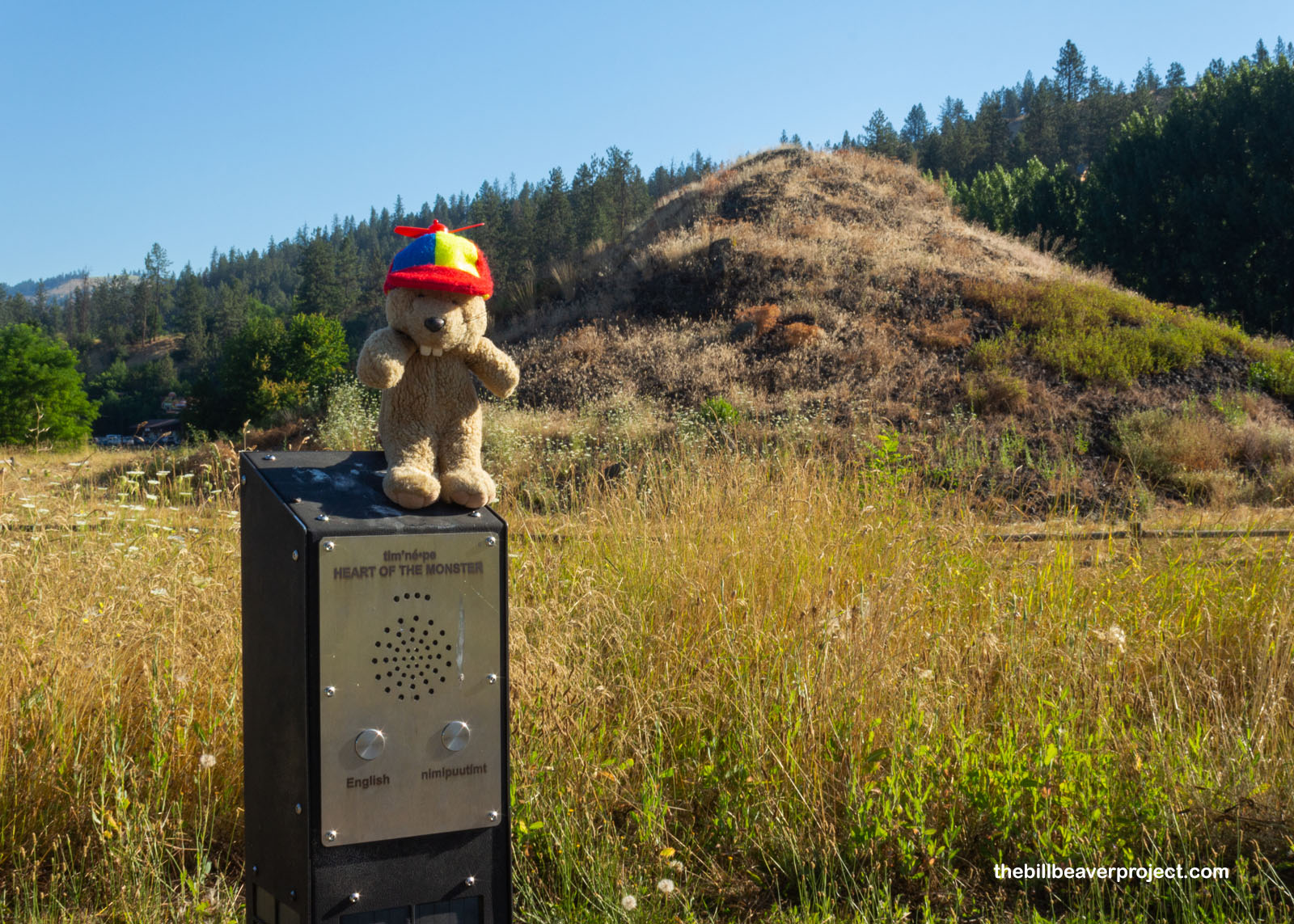 |
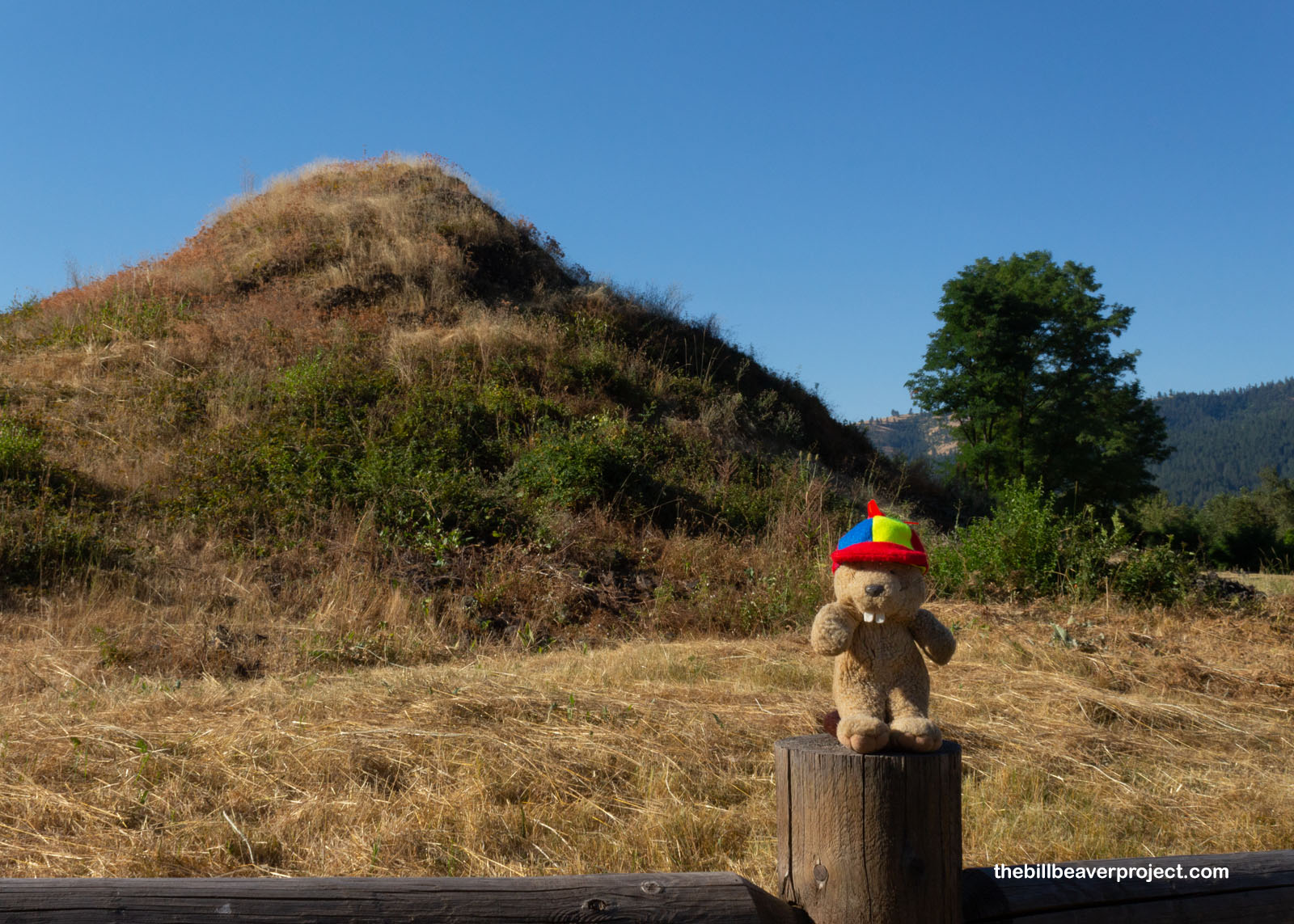 |
Along my Niimíipuu circuit, I came across a lot of sites where the Niimíipuu encountered the Corps of Discovery. Meriwether Lewis and William Clark spent more time with the Niimíipuu on their journey than any other tribe, so the Corps sought their help in transitioning from land trekking back to river travel! Over 10 days in September of 1805, their team crafted five ponderosa canoes here to transport their 34 members down the Clearwater River! Once they pushed off onto the river, they left their horses and overland gear here to await their return in the spring!
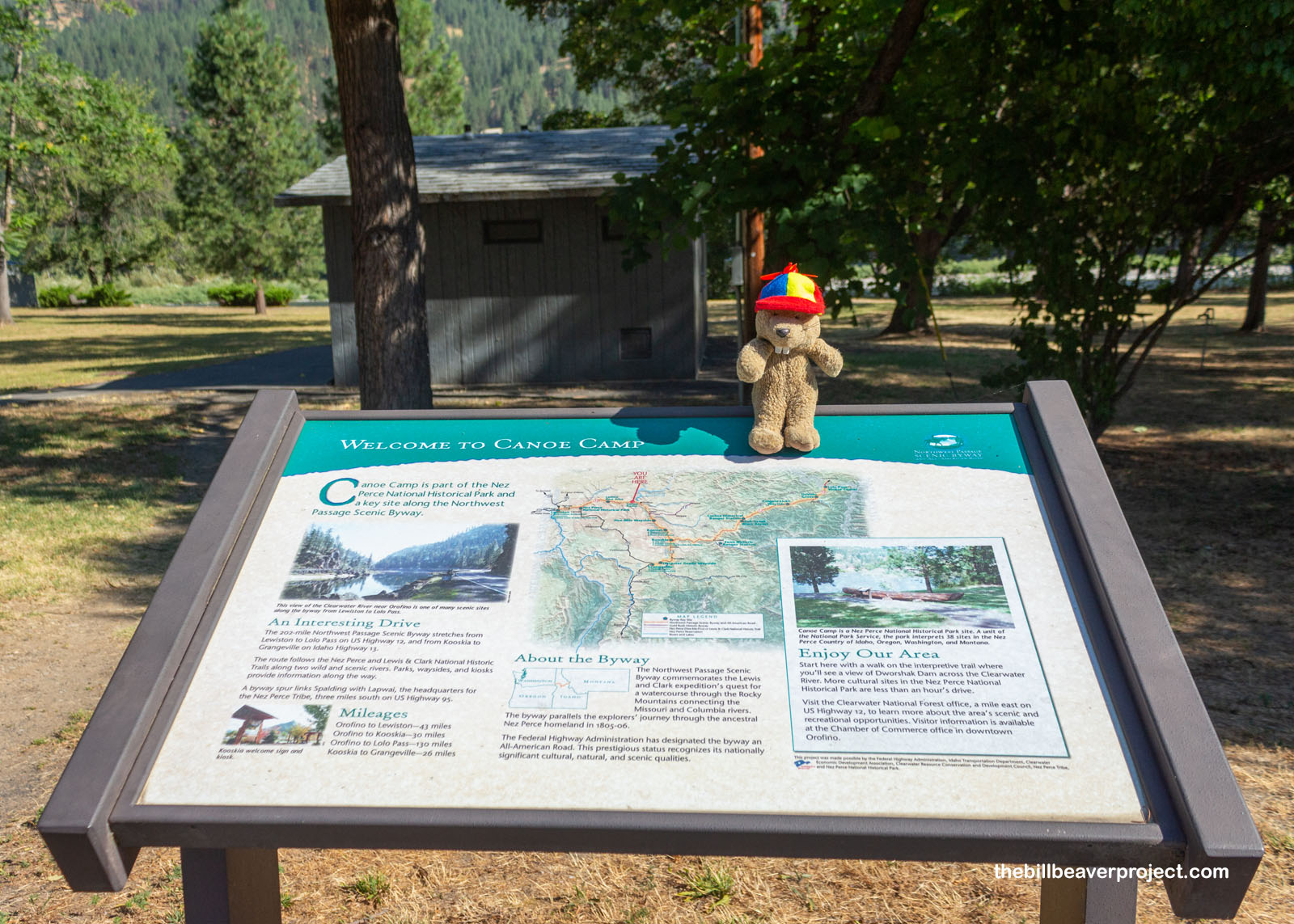 |
They were drawing on the knowledge of the residents of the village here, called Ahsakha! This village had been here, on both sides of the river for at least 2,000 years, transitioning from pit houses to tule lodges, because the canyon shaped the climate to make winters here milder than in surrounding areas!
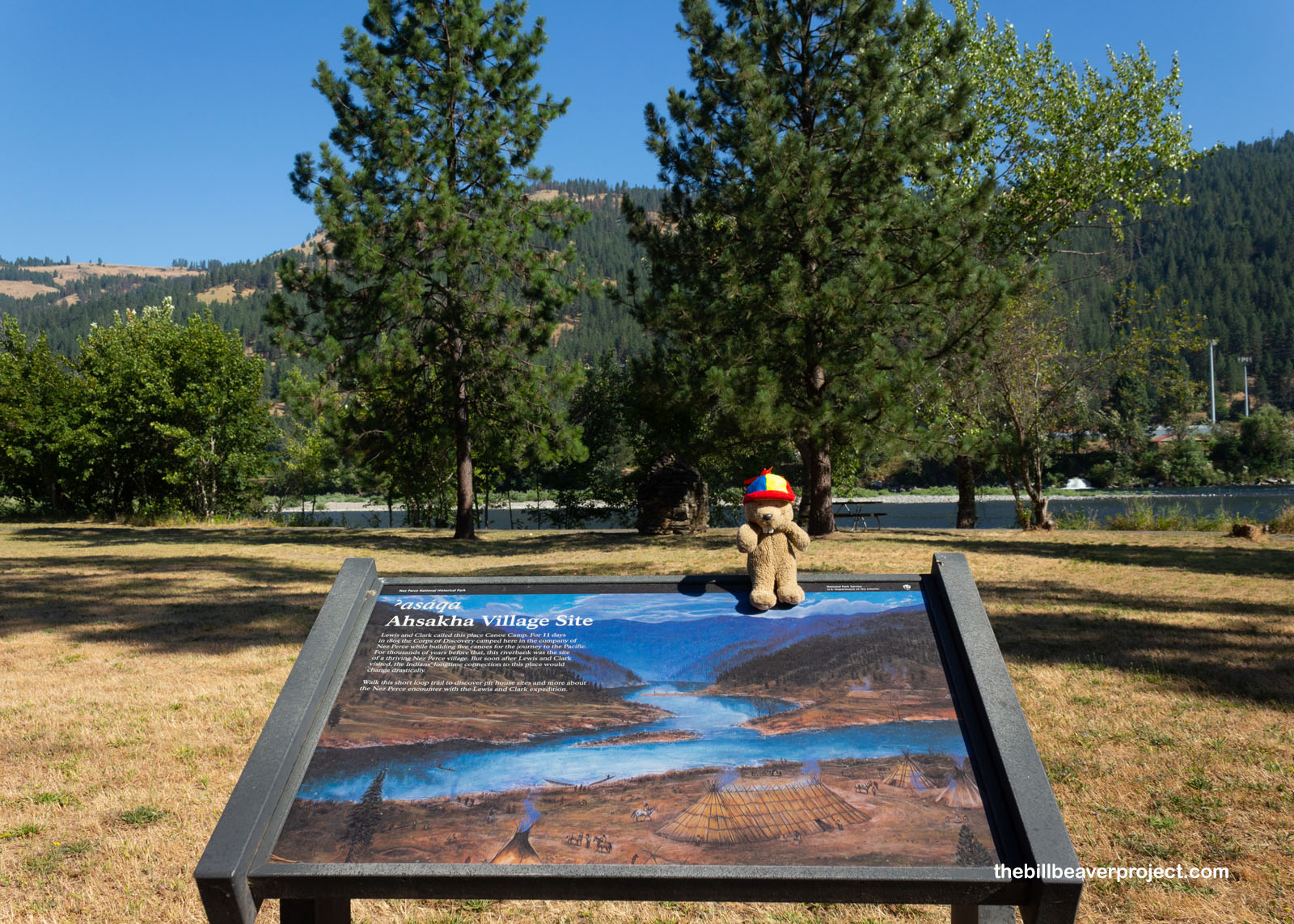 |
Despite the Corps of Discovery’s good relationship with the Niimíipuu, they could not, or would not, stop the turmoil that would engulf the tribe in the late 1800s. This is pretty clear here at Canoe Camp, where the only thing still standing is this old, undated fireplace that definitely wasn’t part of Ahsaka!
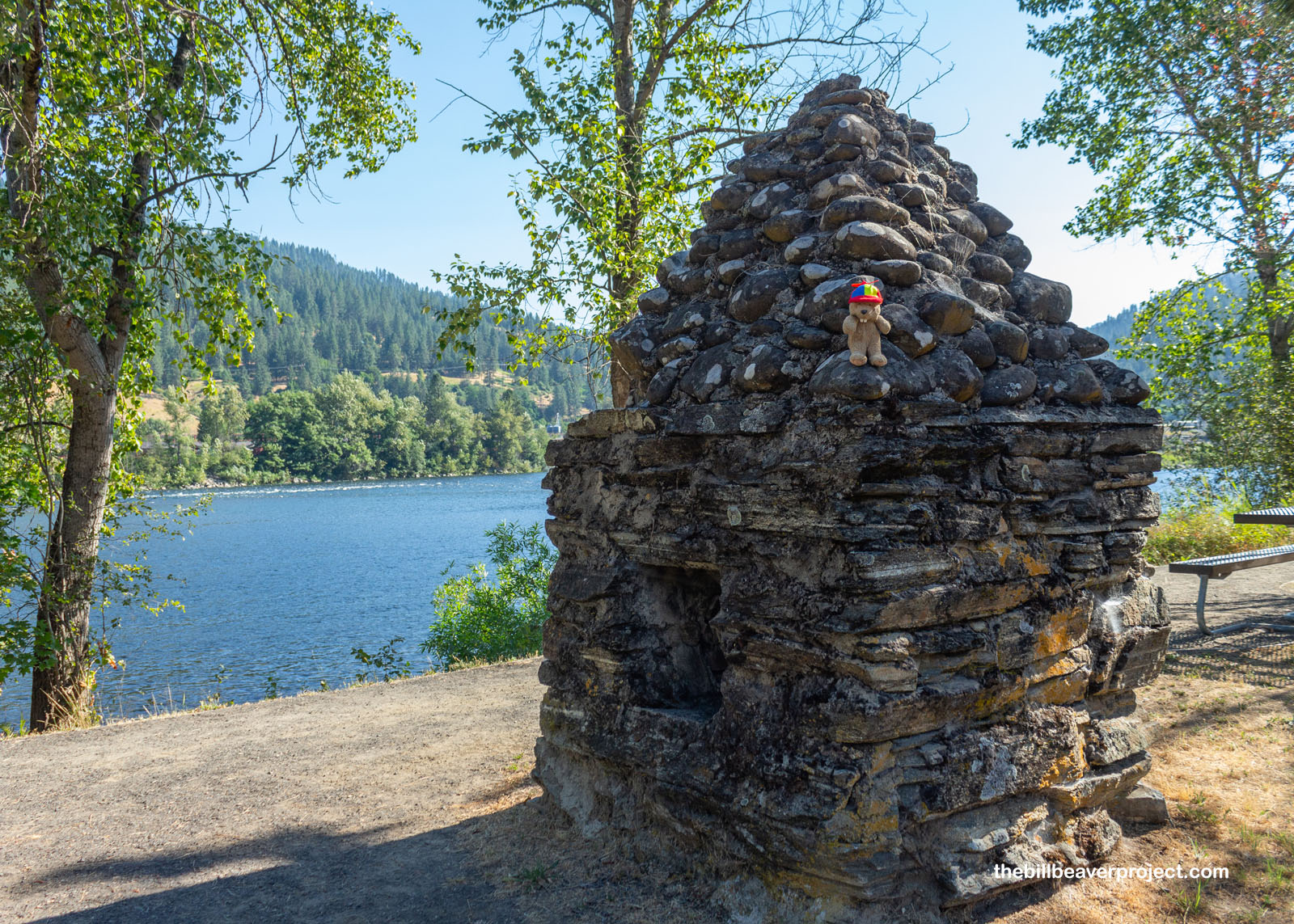 |
Just like in California, some of that turmoil came from Christian missionaries, who flocked to Niimíipuu territory in the mid 1800s! Among them were Henry and Eliza Spalding, who set up a Presbyterian mission here in 1838 and stayed here for ten years! Apart from religious activities, they ran a school, a printing house, and a grist mill to keep the traditionally migratory Niimíipuu in one place all year. This lasted all the way until 1848, when the Spaldings’ affiliates, the Whitmans, were murdered in Walla Walla!
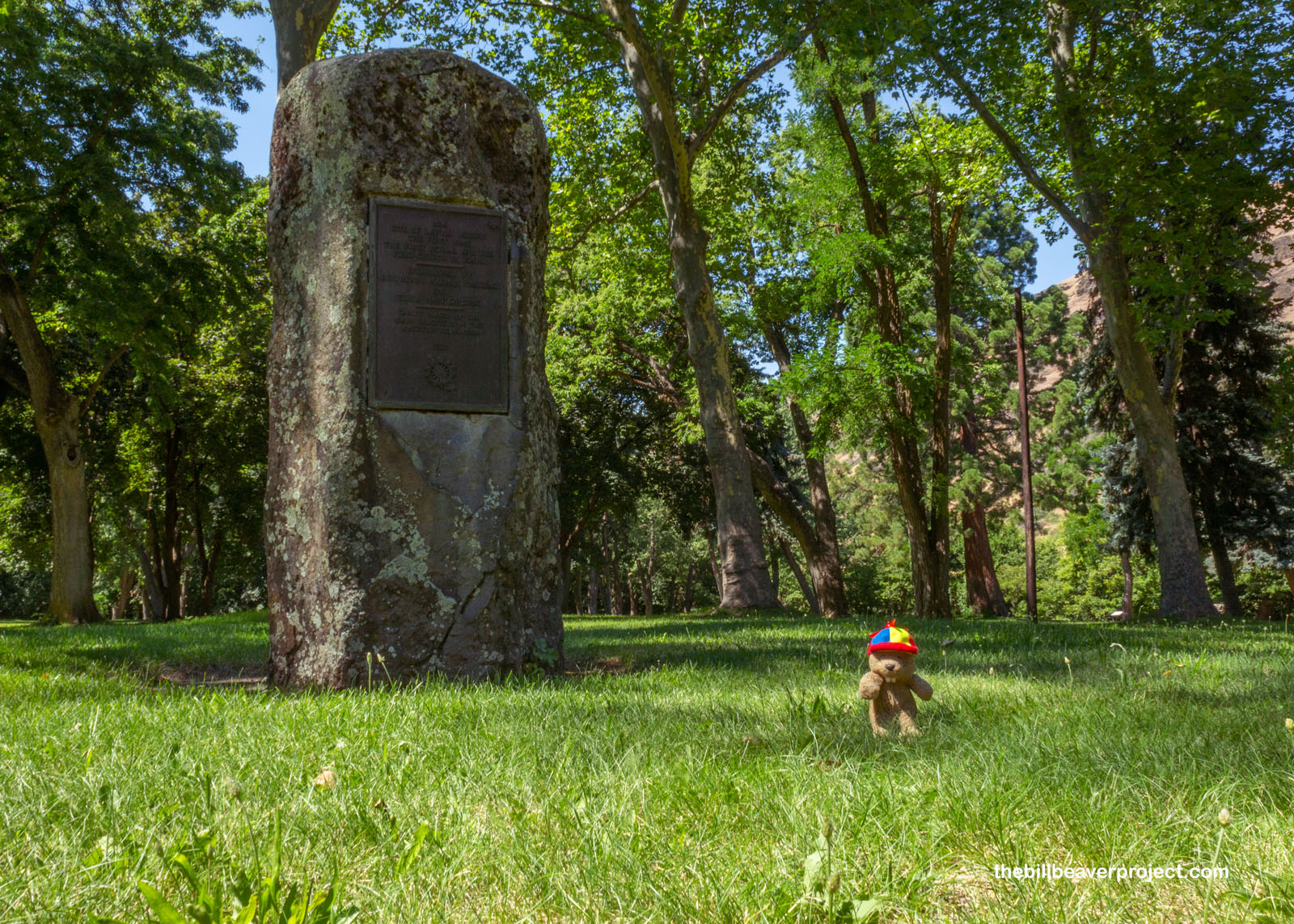 |
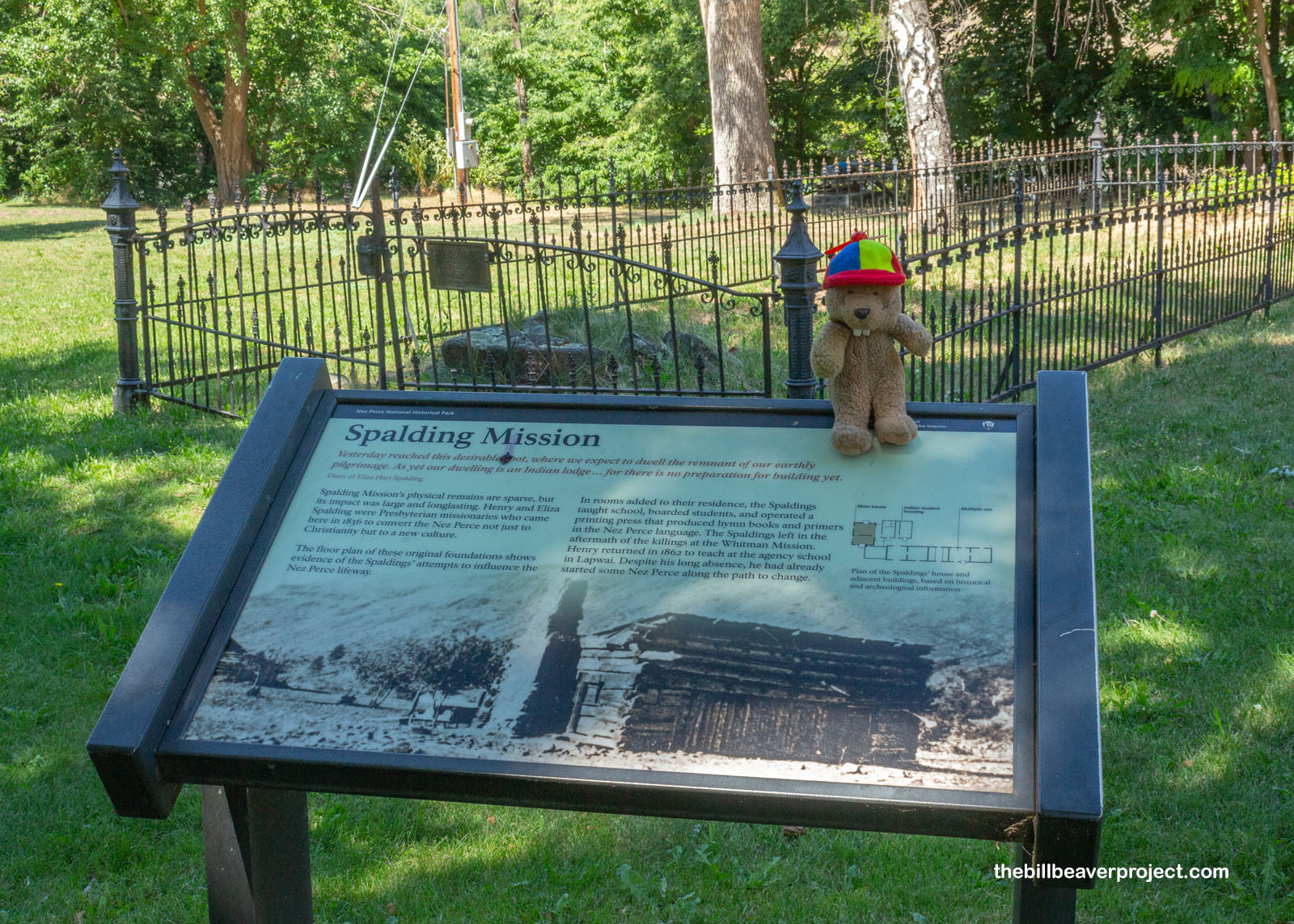 |
From there, their structures turned over to the Indian Agency, which was installed here to uphold the US’ treaty agreements in 1855 and 1863. However, the Agency failed to protect the Niimíipuu from miners and farmers who were encroaching on their treaty-designated land, and by 1863, the US Government had taken control of 90% of the Niimíipuu homeland anyway! This, of course, led to the Nez Perce War I mentioned earlier!
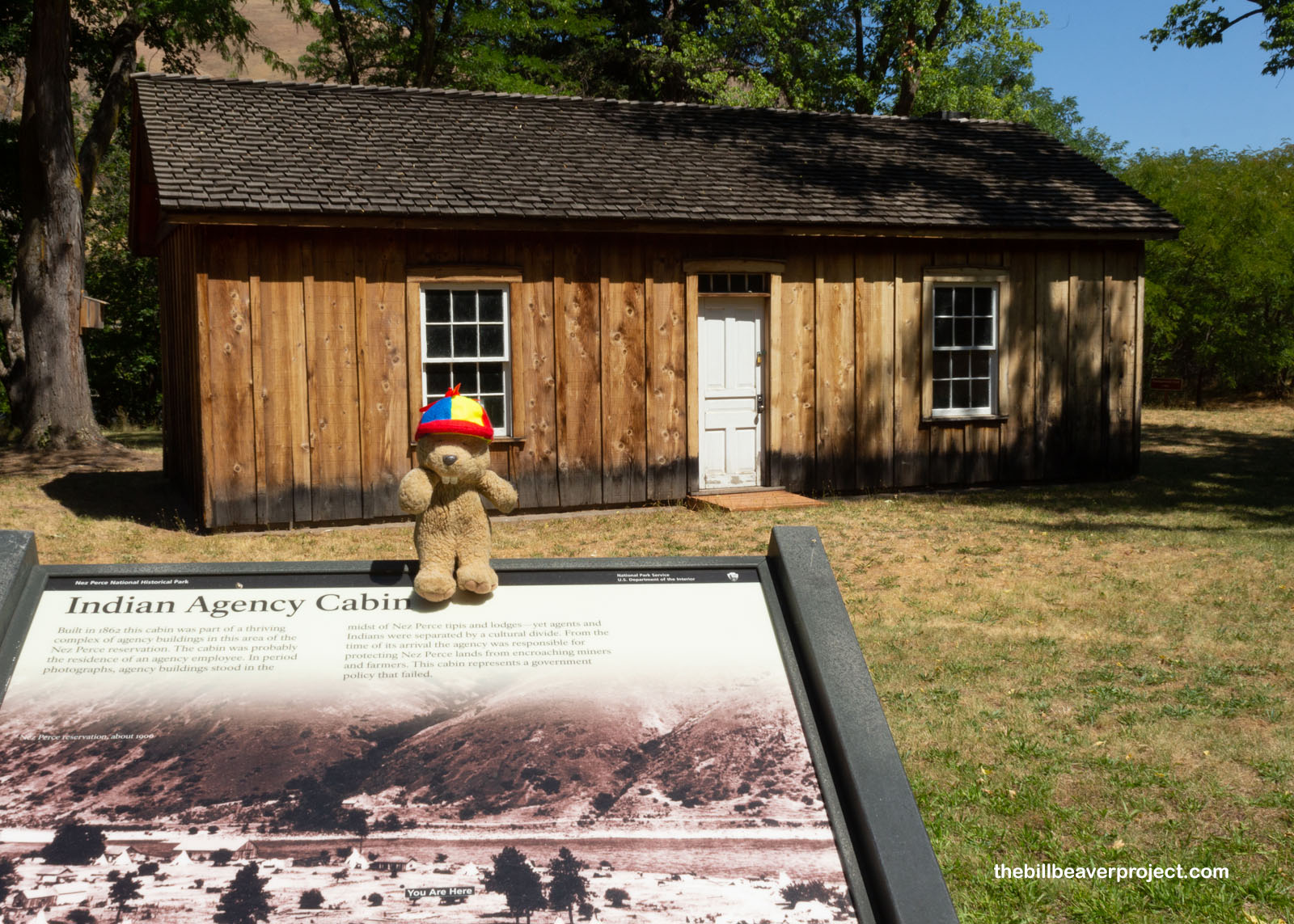 |
But despite generations of abuse and broken promises, the Niimíipuu are still resilient as stone! Nowhere on this side of Idaho is that clearer than the volcanic arch called Ant & Yellowjacket! An enduring formation from Niimíipuu lore, this arch resembles two giant bugs who had fought over a piece of salmon. When Coyote told them to stop fighting, they ignored him, so the powerful Coyote did to them what he did to the monster and turned them to stone!
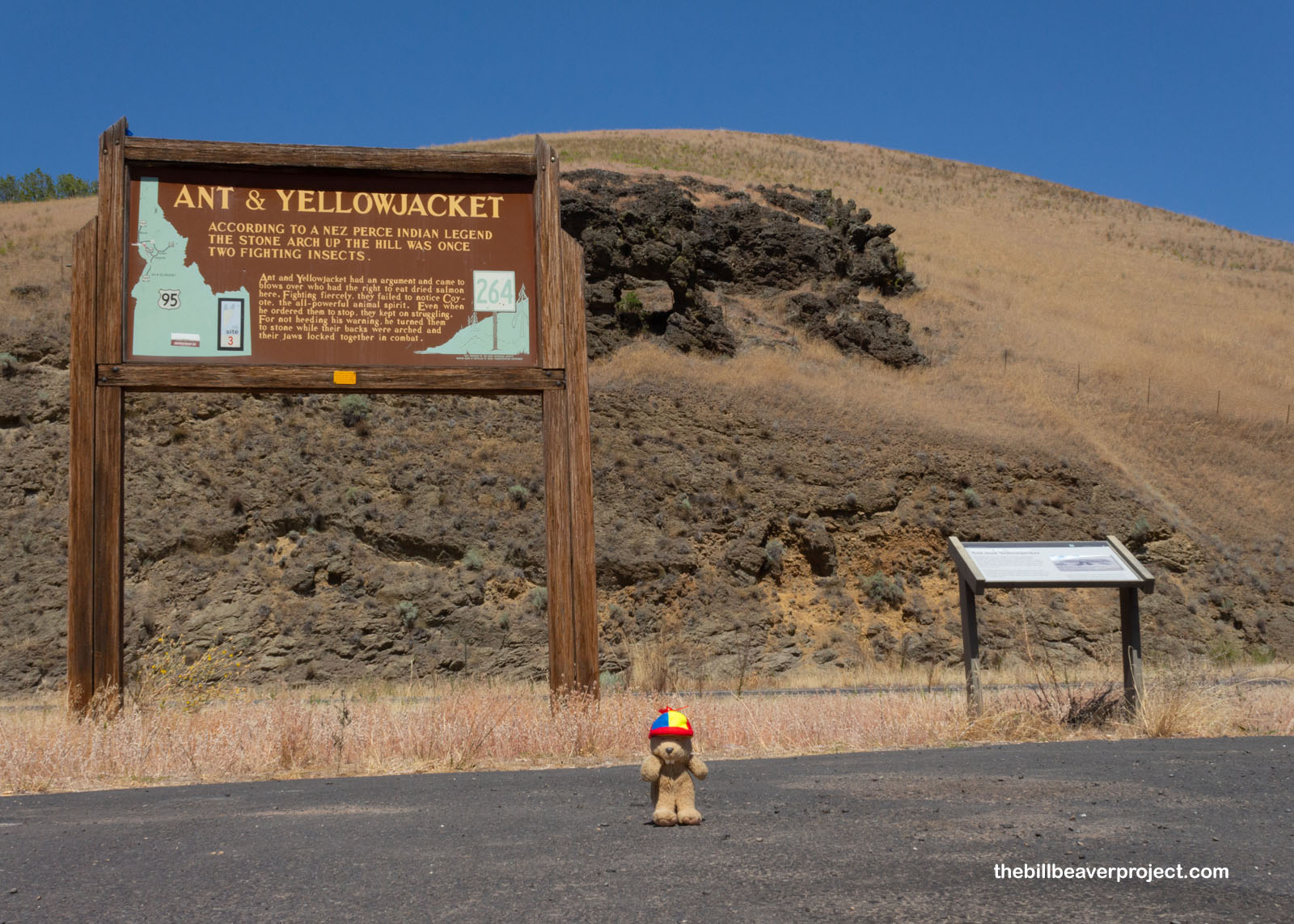 |
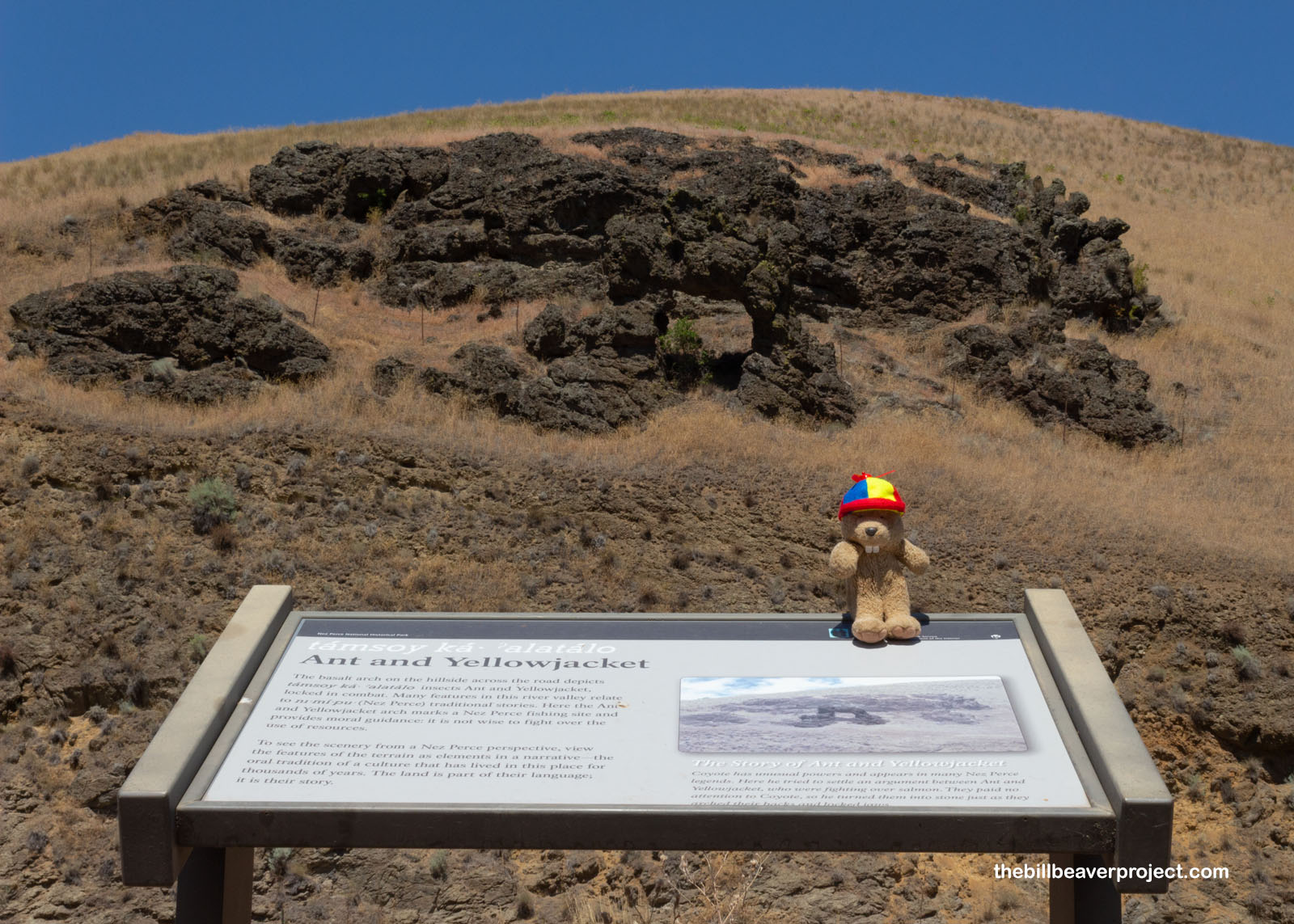 |
Coyote did the same to a nosy black bear just down the road. The foolish bear teased Coyote for missing the winter migration, and Coyote got so mad that he turned the poor bear to stone and tossed him upon a huge hill, which still resembles a bear! I was glad that these stories have been preserved as highway markers to keep these millennia-old tales accessible for anyone who wants to learn about them!
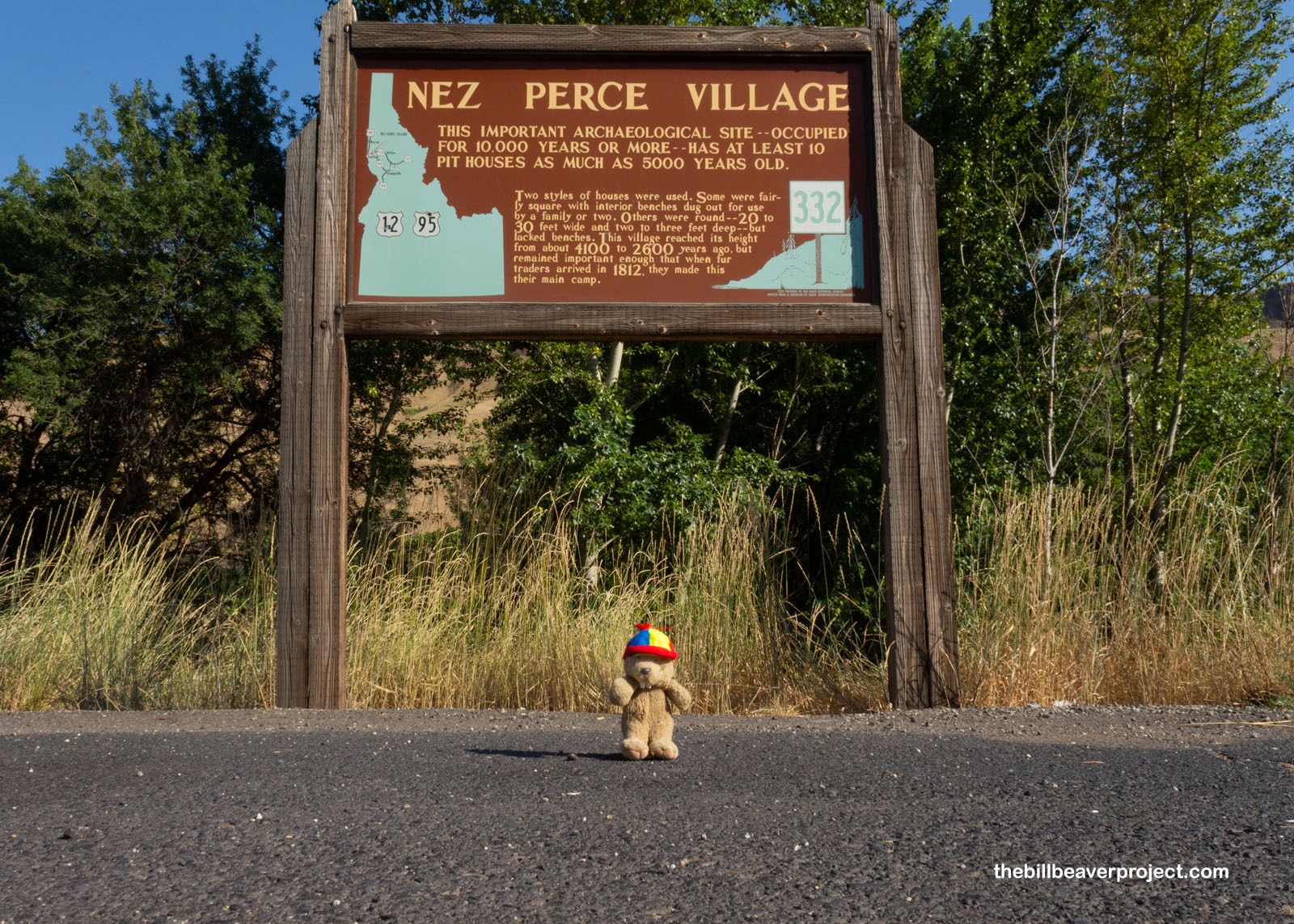 |
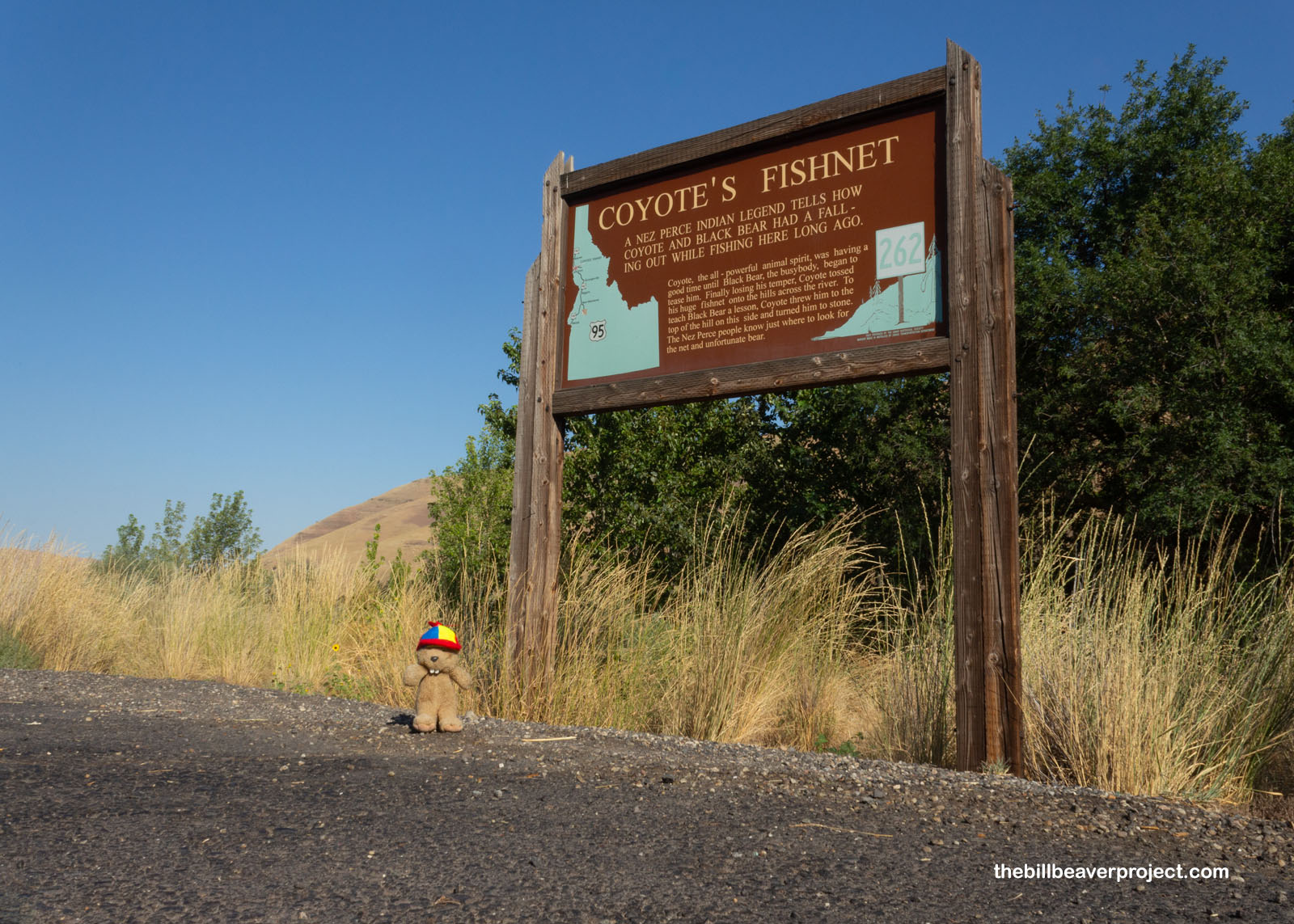 |
Then, for my final stop on this adventure, I crossed the Snake River from Lewiston to Clarkston for a quick visit to Washington State! Always a sucker for petroglyphs, I wanted to visit Buffalo Eddy, home to petroglyph panels left behind by Niimíipuu ancestors! But first, because it was over 100˚F, I had to take a dip in that calm river water!
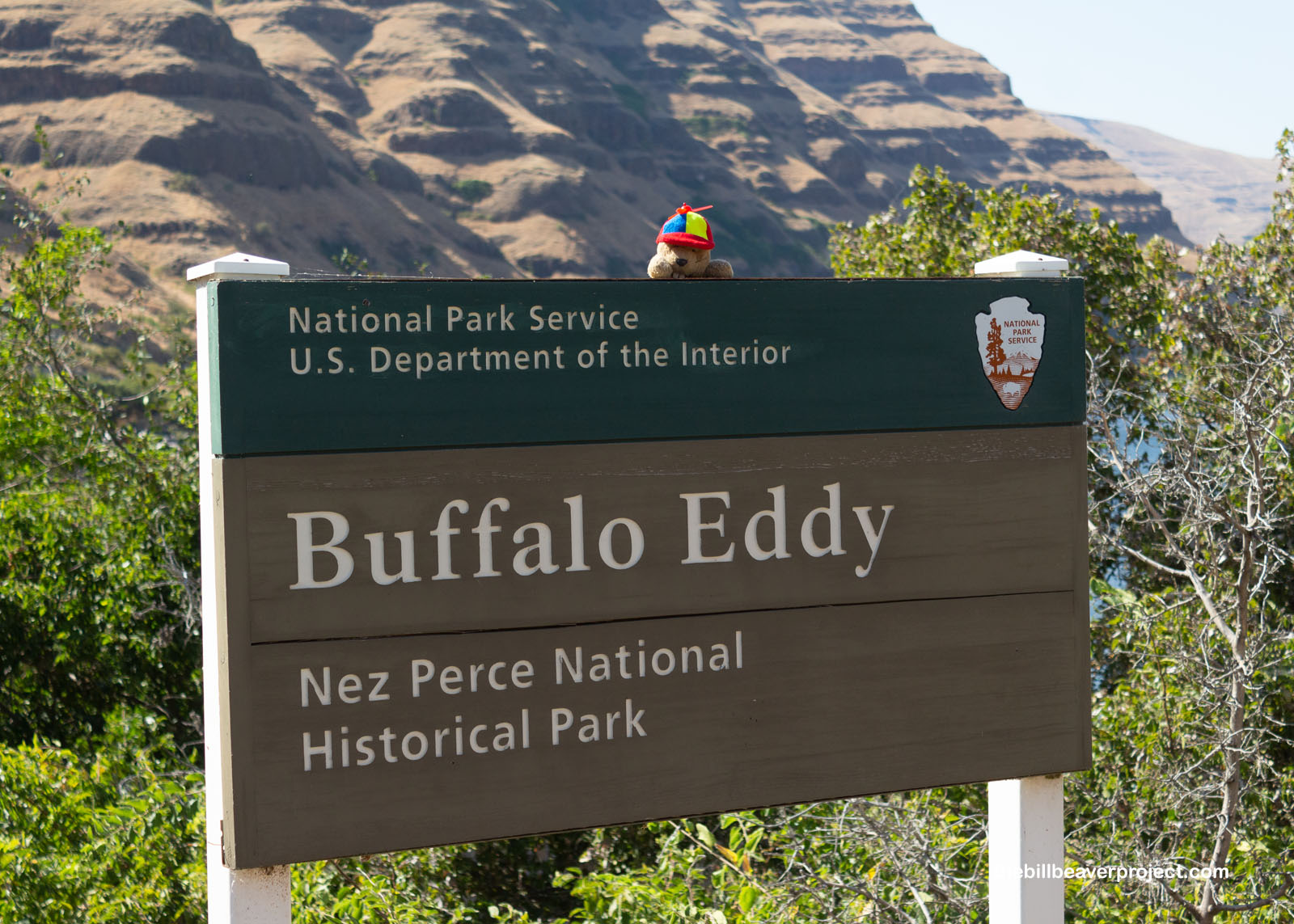 |
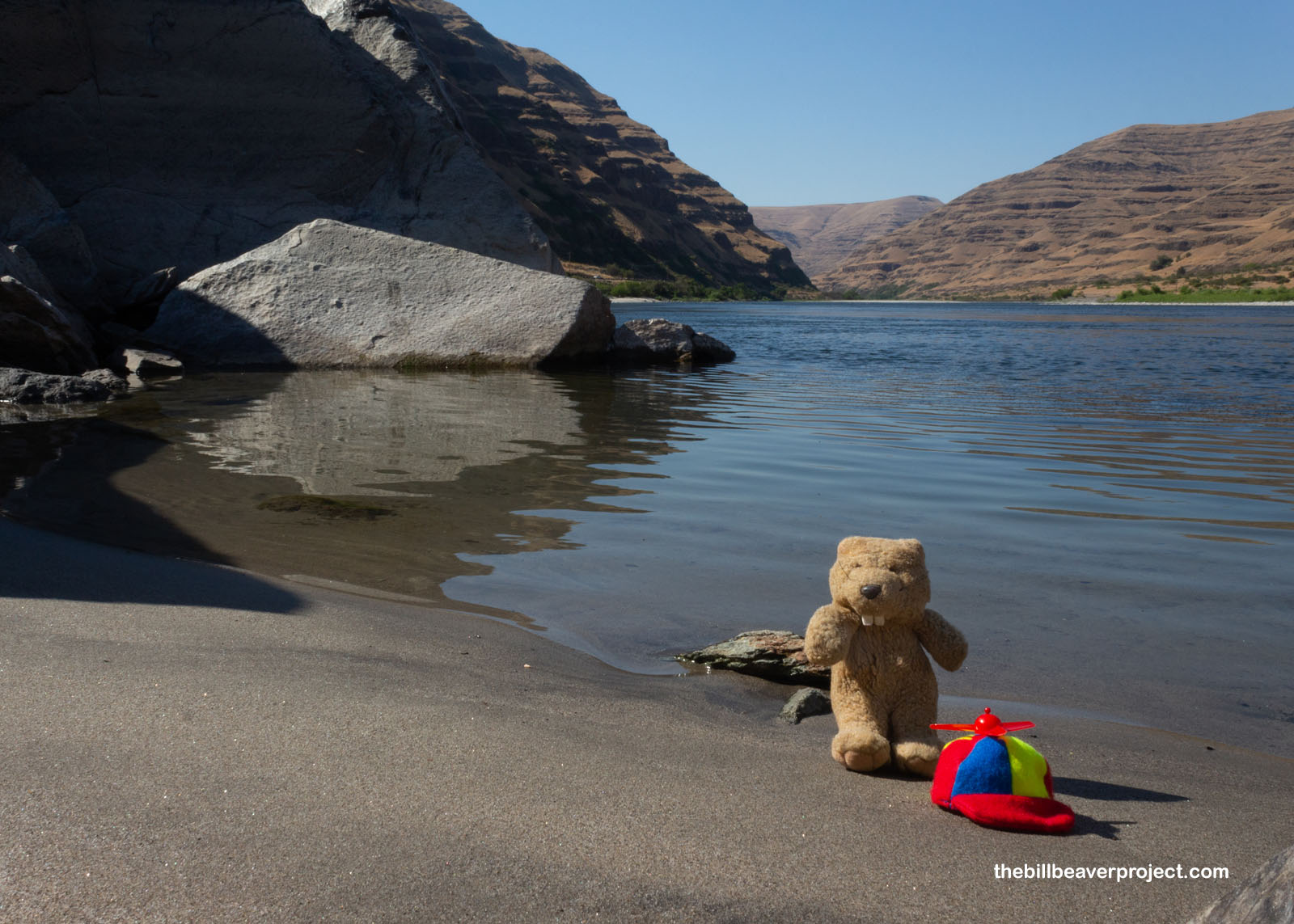 |
The first petroglyphs I saw looked very much like weightlifters holding dumbbells, a design I sure hadn’t seen before! It’s impossible to know exactly what they were intended to be. They could be rattles or paddles, or even atlatls, which would make these panels over 2,000 year old!
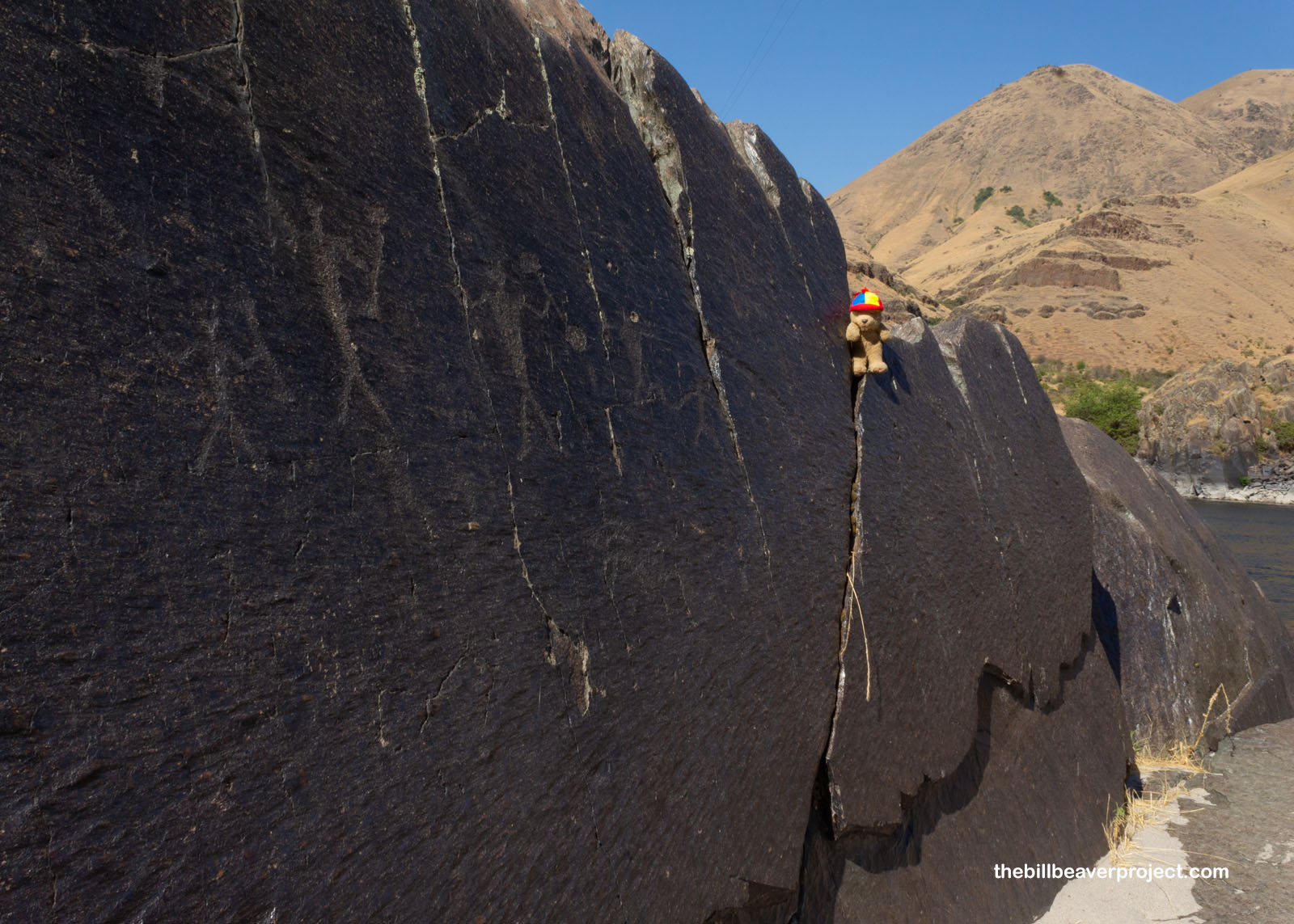 |
And there were lots more lining the rocks along the roadside trail, showing what could be elk (wewúkye) and bighorn sheep (tin’úun)! Today, there’s a trail running along the road that leads to the petroglyphs, but it makes a beaver wonder what kinds of trails passed by here 2,000 years ago! By the way, Beaver (Táxcpol) is credited with stealing fire from greedy pine trees so that others could use it to warm up in the winter time!
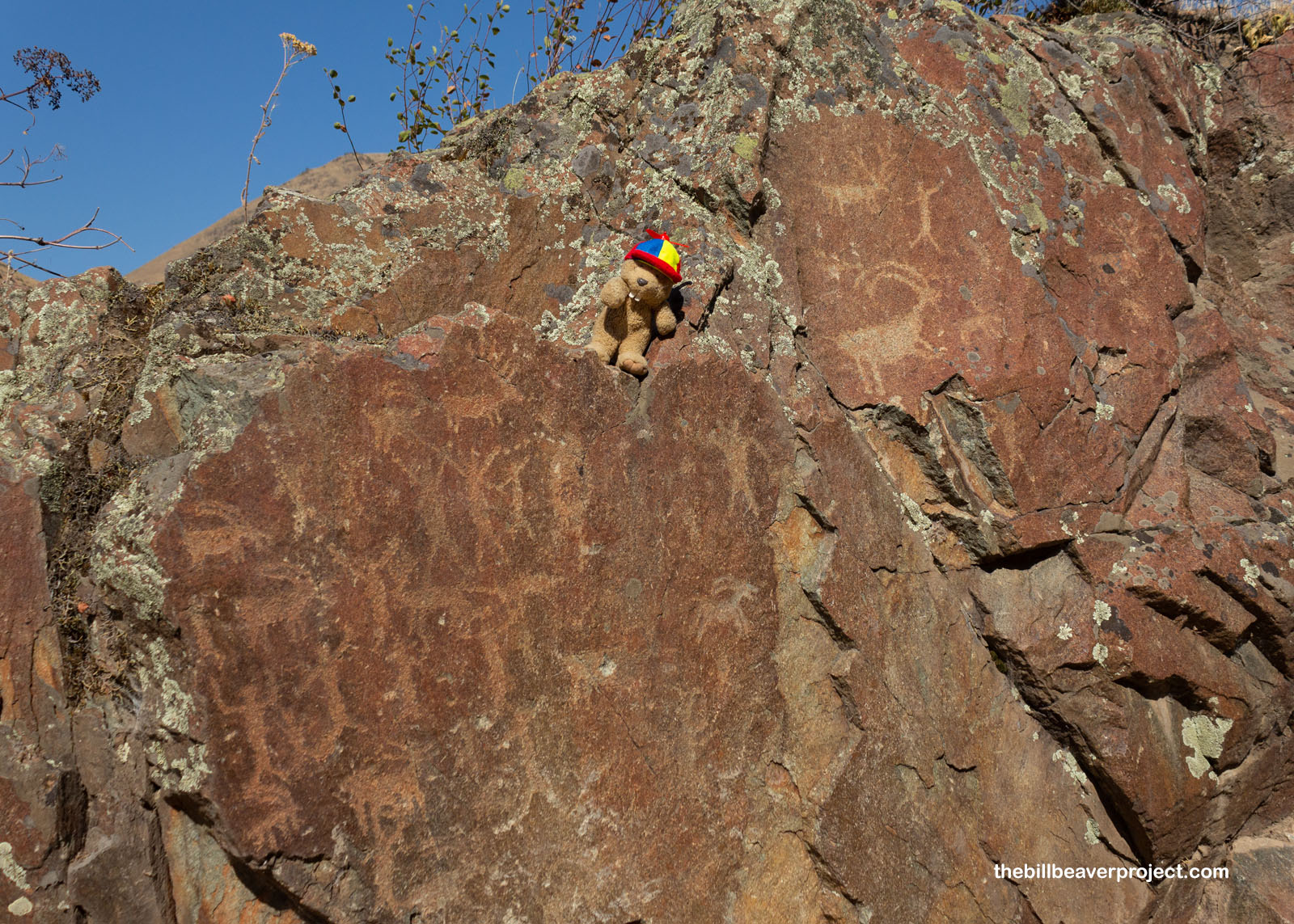 |
By now, I’d gotten myself way up in the remote reaches of the northwest, and it was time to get on back to my base of adventuring. After my really nice experience with an AirBNB in Vermont, I reserved another off a golf course in New Meadows, a loft built into a country barn! As you can see, this upstairs apartment was not lacking in charm or comfort, the perfect space to wind down after a day of running around in the land of the Niimíipuu!
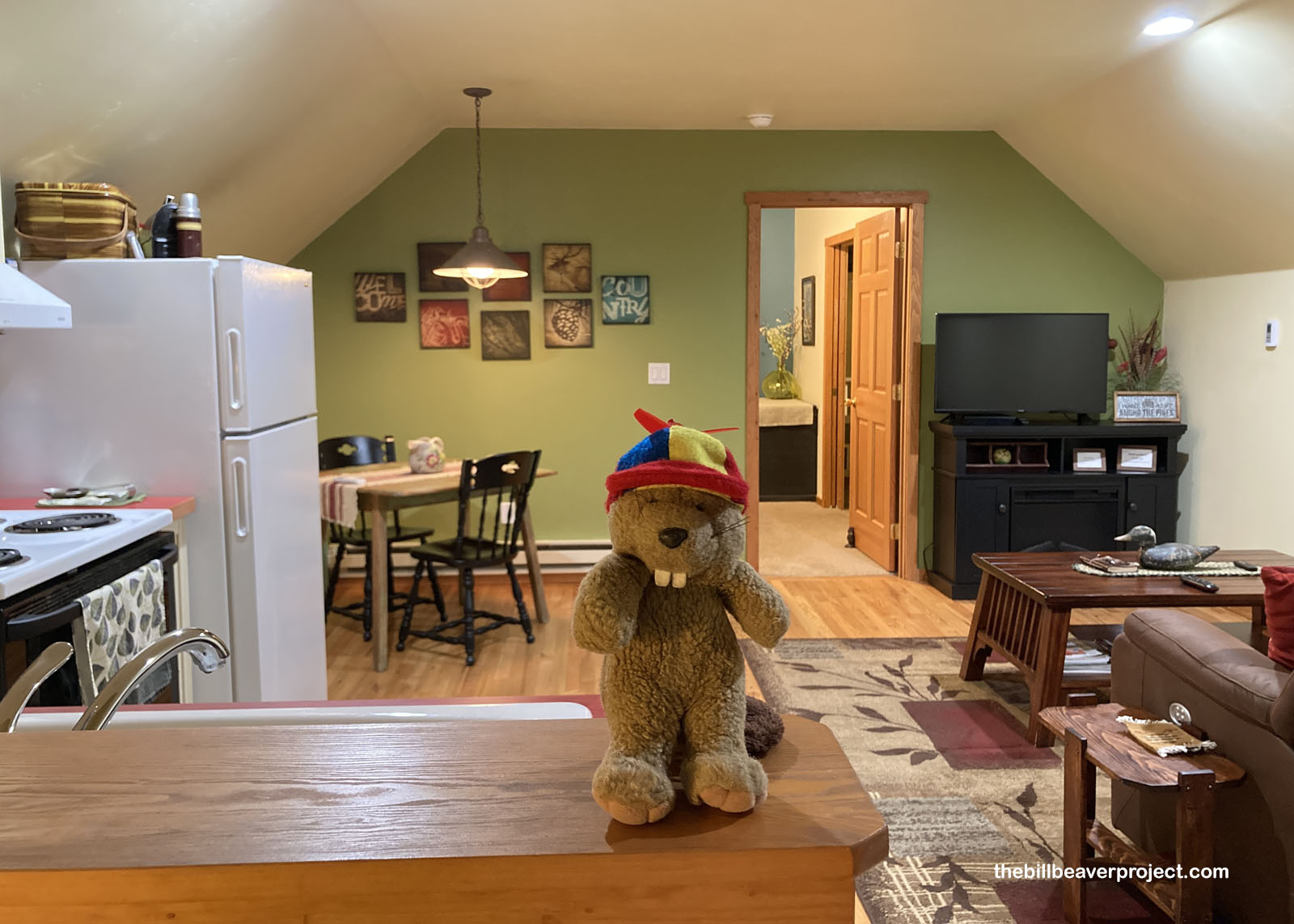 |
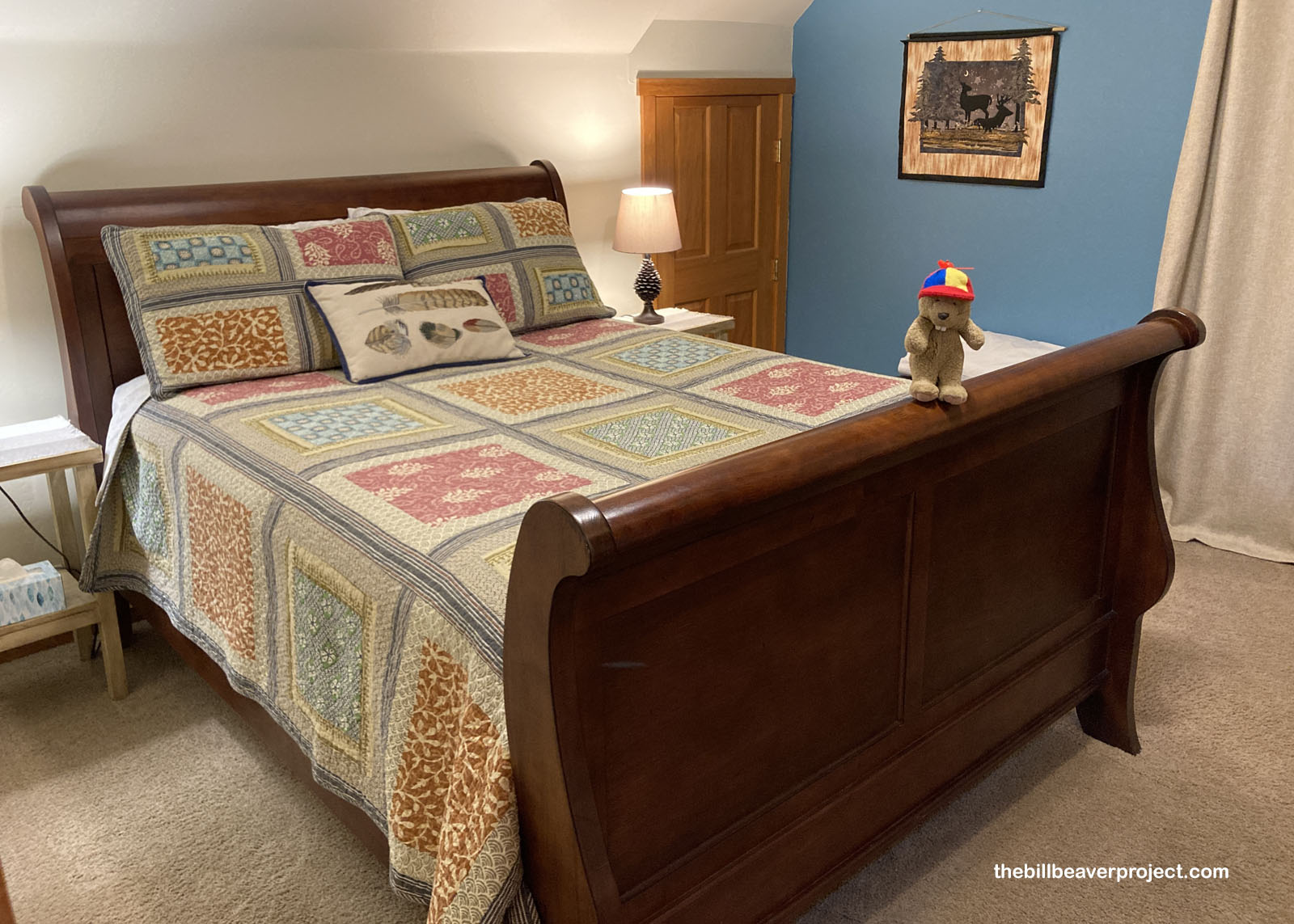 |
Today was a real treat, getting to learn about the lore and landscape of the Niimíipuu, even if only from a few of the 38 sites in the park! With it came an important reminder that these folks, whose name means “we, the people,” are still essential caretakers of the land, fighting especially hard for the salmon, who are being prevented from reaching their spawning grounds by 8 dams! I, for one, hope Coyote will take their side!
Yóx Kálo! Ta’c cik’éetin’!

 More 2022 Adventures |
Total Ground Covered: 325.0 mi (523.0 km) |
 Next Day |
